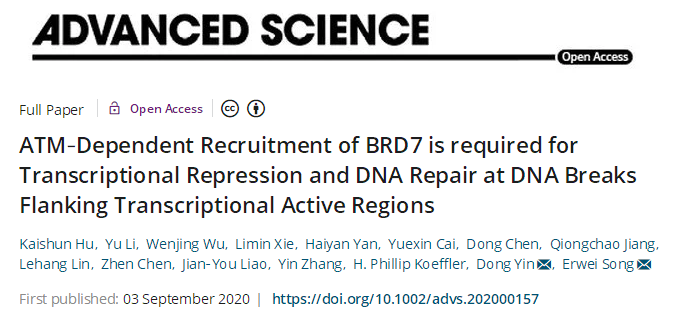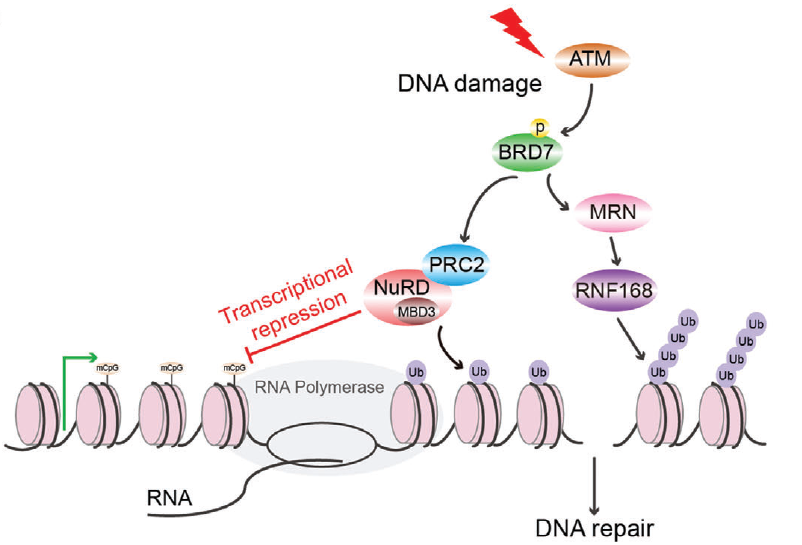Identifying the key linker involved in ATM-mediated transcriptional inhibition and DNA repair in response to DNA double strand breaks
Repair of DNA double-strand break (DSB) is essential for genome integrity, and is accompanied by transcriptional repression at the DSB regions. However, the mechanisms how DNA repair induces transcriptional inhibition remain elusive. Erwei Song, Dong Yin and Kaishun Hu from Sun Yat-Sen memorial hospital, Sun Yat-Sen university published a full article online on Advanced science (IF=15.84) and reported that the BRD7, another specific subunit of PBAF complex, promotes transcriptional silencing and HR contributing to cell survival against DNA damage-inducing agents. These findings establish BRD7 as a newly identified modulator that orchestrates DSB-induced transcriptional repression and DSBs repair signaling in transcriptionally active regions of chromatin, as well as highlight the important role of PBAF complex in maintaining genomic integrity.

Briefly, they propose the following mechanism about switching off transcription during DSB repair: Phosphorylation of BRD7 at Ser 263 by activated ATM facilitates interaction of BRD7 with PRC2 and NuRD complex and recruitment of these factors to DSBs sites flanking transcription active regions. Consequently, BRD7/ PRC2/NuRD complex induces transcriptional repression and enables the access of DSB repair factors to DSB sites. Meanwhile, phosphorylation of BRD7 at Ser 263 is also required for MRN complex and ubiquitin E3 ligase RNF168 recruitment to DSB lesions, proper HR repair and activation of MRN/ATM signaling pathway, resulting in recruiting BRD7 itself to DSBs flanking chromatin at a later stage of DDR. Therefore, their findings shed new insight into how ATM signaling orchestrate DSB-induced transcriptional repression and DNA repair processes to maintain genome integrity.

Model of the role of the PBAF subunit BRD7 in coordinating DSB-induced transcriptional repression and HR repair
Article Link: https://www.onlinelibrary.wiley.com/doi/10.1002/advs.202000157。


